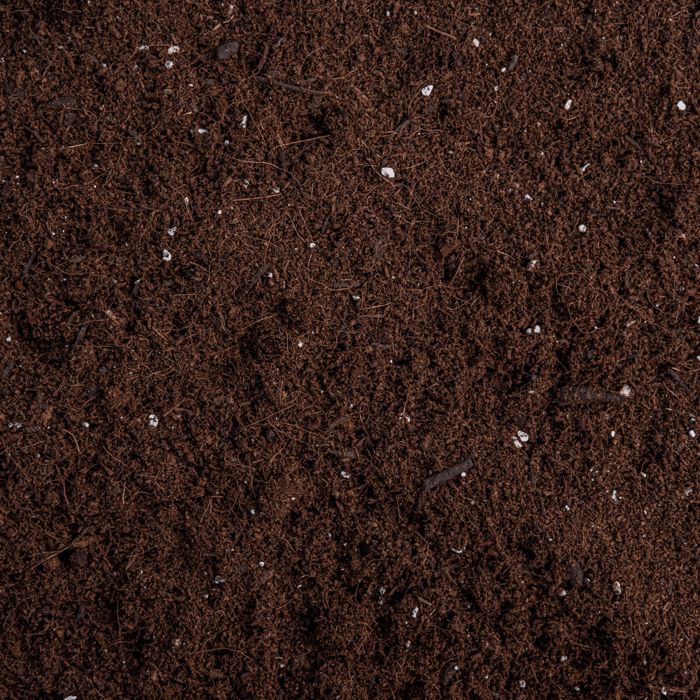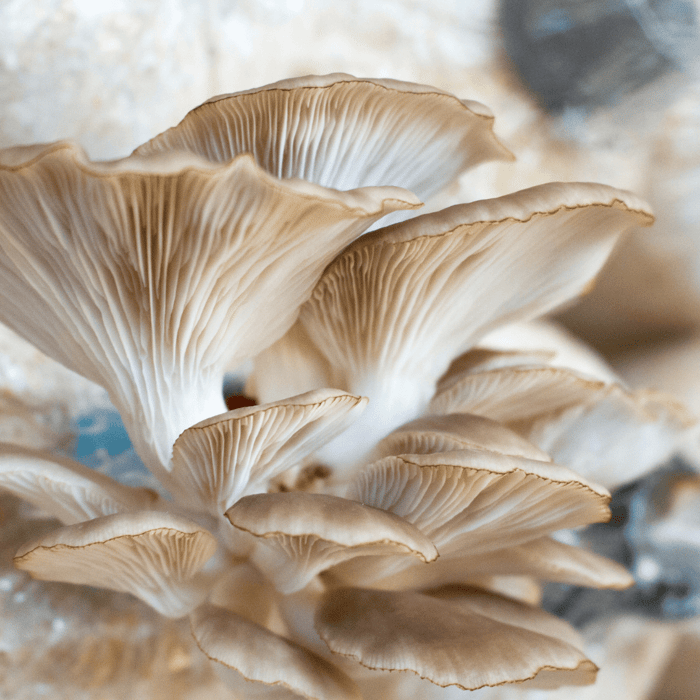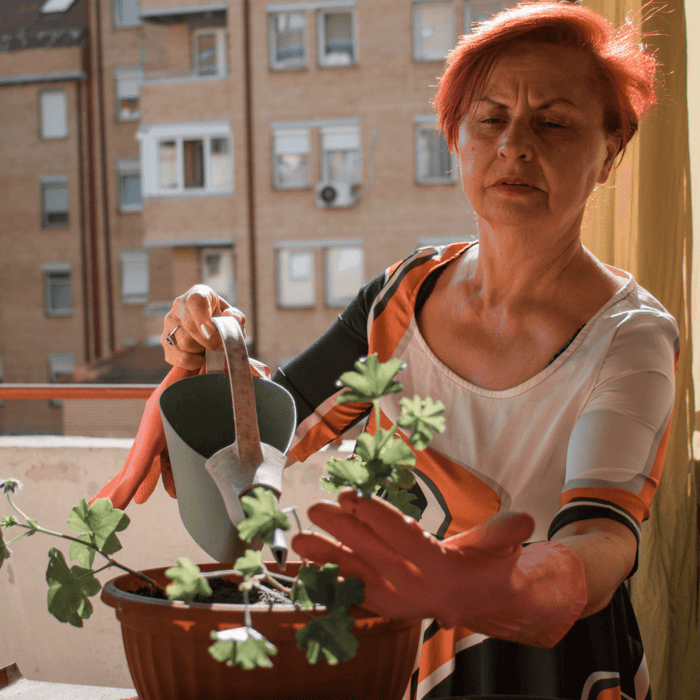Are you getting ready to sow seeds for your dream garden but confused about the suitable soil to use? Choosing the appropriate soil is crucial for your gardening success, and understanding the differences between seed starting mix and potting soil can set you on the right path. In this article, we'll delve into the world of seed starting mix vs potting soil, discussing their characteristics, benefits, and practical applications. By the end, you'll be armed with the knowledge to make an informed decision and grow a thriving garden.
Characteristics of Seed Starting Mix
Seed starting mix is a lightweight blend of materials designed specifically for promoting seed germination of your fruit and vegetable seeds. Its composition focuses on providing the ideal environment for delicate seedlings. Some typical components of seed starting mix include peat moss or coconut coir, perlite or vermiculite, and sometimes a small amount of compost. These ingredients create a well-aerated, moisture-retentive, and sterile growing medium.
The absence of nutrients in the seed starting mix may seem counterintuitive, but it serves a crucial purpose. Young seedlings are sensitive to high nutrient concentrations, and an excess of nutrients can lead to issues like damping-off, a fungal disease that can cause seedlings to collapse and die. Seed starting mix is designed to give seeds the best possible start in life by providing a sterile, well-draining environment that promotes strong root development.
Vegetable Seed Vault Kit | 35 Variety Pack

$29.95
$49.95
Ultimate Survival Seed Vault: 16,000+ Non-GMO Heirloom Vegetable Seeds for Emergency Preparedness Introducing the Seed Vault Kit, your all-in-one solution for emergency preparedness and sustainable gardening. This premium seed kit contains over 16,000 non-GMO, Heirloom, Non-Hybrid, and Open Pollinated seeds,… read more
Composition of Seed Starting Mix
Seed starting mix is a blend of lightweight ingredients designed to promote seed germination. The typical components of a seed starting mix are:
-
Peat moss or coconut coir: Both materials improve aeration and water retention, providing an ideal environment for delicate seedlings. Peat moss is widely used in seed-starting mixes, but coconut coir has gained popularity due to its sustainability and similar properties.
-
Vermiculite or perlite: These minerals increase porosity, facilitating proper drainage and oxygen availability. Vermiculite has an excellent water-holding capacity, while perlite is known for its superb drainage qualities.
-
Minimal nutrients: Since seeds have enough nutrients for germination, seed starting mixes focus on providing the right texture and environment rather than a nutrient boost. You boost the seedlings with nutrition after forming the first set of true leaves.
Benefits of Seed Starting Mix
Using seed starting mix has several advantages that make it the go-to choice for gardeners when germinating seeds:
-
Better seed germination: The airy texture and proper drainage encourage seeds to sprout successfully. Seeds can break through the soil surface better without becoming waterlogged or suffocated.
-
Reduced risk of diseases: Sterilized ingredients help prevent damping-off and other seedling diseases. This is especially important for sensitive plants more prone to infections in their early stages.
-
Light and airy texture: A seed starting mix promotes healthy root development and reduces the risk of compaction. A less compact medium makes it easier for roots to grow and access essential nutrients.
-
Suitable for sensitive young plants: The gentle seed starting mix is perfect for nurturing delicate seedlings, ensuring they have the best possible start.
Case Study: The success of heirloom seeds with seed starting mix
I have worked in the garden for over 30 years and have found that using a seed starting mix significantly improved the germination rates of my heirloom seeds. The seedlings grew healthier and produced greater yields than those grown in traditional potting soil. I have discovered that the specialized composition of the seed starting mix provided the perfect environment for her precious heirloom seeds, resulting in more vigorous plants and bountiful harvests.
Characteristics of Potting Soil
Potting soil is a versatile growing medium formulated to provide the necessary nutrients and support for established plants. Unlike seed starting mix, potting soil contains ingredients that provide a balanced diet for plants, such as peat moss or coconut coir, perlite or vermiculite, compost or aged manure, and sometimes slow-release fertilizers. This combination ensures the soil retains moisture and drains excess water while delivering essential nutrients to plants.
The texture of potting soil is generally denser than a seed starting mix, which helps support the growth of larger plants. The composition of potting soil can vary widely, with different blends catering to the specific needs of various plant types. Depending on the plant's requirements, some potting soils may contain additional ingredients, such as sand, bark, or other organic materials, to improve drainage, aeration, or fertility. You can usually see the larger pieces, like the bark, just by opening the bag. If you see big pieces of organic matter, it is not, in my opinion, the best thing to use when starting seeds.
Composition of potting soil
Potting soil is a nutrient-rich mix that supports plant growth after establishing seedlings. Its composition varies depending on the brand and purpose, but it typically includes the following:
-
Peat moss, coir, or compost: These materials enhance water retention and provide a stable base for the mix. They also contribute to the overall nutrient content, giving plants a well-rounded diet.
-
Perlite or vermiculite: Similar to their role in seed-starting mixes, these minerals help maintain proper drainage and aeration. They balance water retention and drainage, ensuring plants have access to enough water without becoming waterlogged.
-
Balanced nutrient mix: A combination of macronutrients (nitrogen, phosphorus, and potassium) and micronutrients (calcium, magnesium, iron, etc.) cater to the plant's needs, promoting robust growth and overall health.
-
pH level management: Potting soil is often formulated to maintain a specific pH range, suitable for various plants. This ensures that nutrients are readily available for plants to absorb and thrive.
Wildflower, Perennial, & Annual Flower Seed Kit | 35 Variety Pack
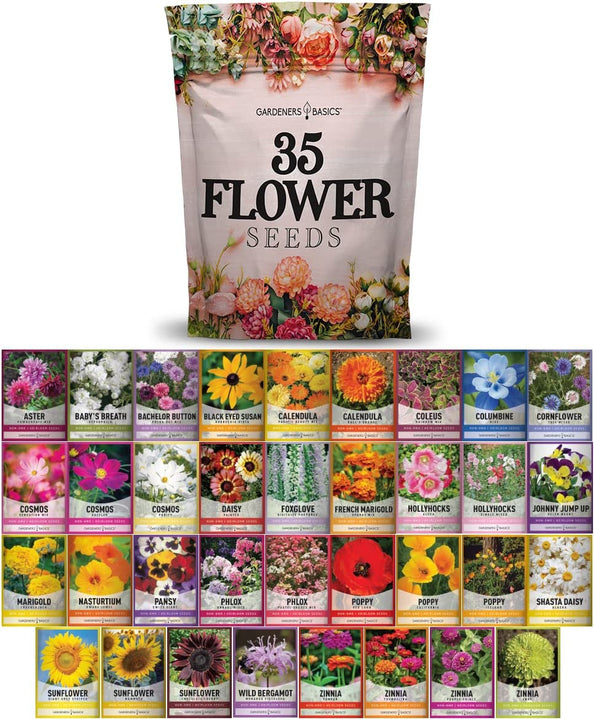
$29.95
$49.95
35 Flower Seeds Variety Pack – Heirloom, Non-Hybrid, Non-GMO, Open-Pollinated – Perfect for Pollinator-Friendly Gardens Transform your garden with our 35 Flower Seeds Variety Pack, offering a stunning and diverse selection of heirloom, non-hybrid, and non-GMO seeds. Each variety in… read more
Benefits of Potting Soil
Potting soil offers a range of benefits that make it an ideal growing medium for established seedlings and various other plants:
-
Supports plant growth: The nutrient-rich composition of potting soil fuels healthy growth, contributing to strong stems, lush foliage, and abundant blooms or fruits.
-
Rich in nutrients: Unlike seed starting mix, potting soil provides a well-balanced diet for plants, ensuring they have access to all the essential elements for optimal growth and development.
-
Better water retention and drainage: The ingredients in potting soil strike the perfect balance between retaining moisture and draining excess water, preventing root rot and other moisture-related issues.
-
Suitable for a wide range of plants: From flowering plants to vegetables and herbs, potting soil is versatile enough to cater to the needs of various plant types and their specific growing requirements.
Tutorial: Creating your own potting soil mix
Customizing your potting soil mix can be cost-effective and tailored to your plant's needs. Here's a simple guide to creating your own potting soil mix:
-
Ingredients needed: Gather peat moss or coconut coir, perlite or vermiculite, compost or aged manure, and slow-release granular fertilizer.
-
Steps to follow:
- Combine peat moss or coconut coir, perlite or vermiculite, and compost or aged manure in a large container or wheelbarrow.
- Add slow-release granular fertilizer according to the package instructions, adjusting the amount based on your plants' nutritional requirements.
- Mix the ingredients thoroughly, ensuring an even distribution of components.
- Moisten the mix with water before poting or transplanting your plants.
-
Tips for success: Experiment with different ingredient ratios to find the perfect blend for your specific plants. Keep track of your recipes and their results, so you can replicate or tweak them as needed. I generally use 1/3 peat moss (or coconut coir), 1/3 compost, and 1/3 perlite when I make my own seed starting mix at home.
Comparing Seed Starting Mix vs Potting Soil
Seed starting mix and potting soil serve different purposes in the garden, and understanding their unique characteristics is essential for choosing a suitable growing medium. Seed starting mix is designed explicitly for germinating seeds and nurturing the early stages of plant growth, offering a sterile and well-draining environment that encourages healthy root development. On the other hand, potting soil provides the essential nutrients and support for established plants, promoting strong growth, lush foliage, and abundant blooms or fruits.
When comparing the two, it is essential to consider the growth stage of your plants. The seed starting mix is best for germinating and young seedlings requiring a delicate and sterile environment. At the same time, potting soil is more suitable for established plants that need a nutrient-rich and supportive medium to thrive. Knowing when to use each soil type will help you create the ideal plant-growing conditions, ensuring a healthy, flourishing garden.
Seed germination
The seed starting mix is specifically formulated to provide the optimal environment for seed germination. The light, airy texture, and excellent drainage make it easier for seeds to sprout and develop healthy roots. Examples of seeds that benefit from seed starting mix include tomatoes, peppers, and many flowering plants. They require a sterile and well-aerated medium to prevent damping-off and other diseases.
Transplanting young plants
Once seedlings have established a robust root system and developed a few sets of true leaves, it's time to transplant them into potting soil. This nutrient-rich medium provides the necessary nutrients for continued growth and overall health.
- When to switch: Transplant seedlings with at least two sets of true leaves sturdy enough to handle the process.
- How to transplant without damaging roots: Gently remove seedlings from their original containers, preserving as much of the root system as possible. Place them in a new container filled with pre-moistened potting soil, taking care not to bury the stem deeper than it was previously.
- You can also leave the seedlings in your seed starting mix until you transplant them into the garden. Just ensure you start with your fertilizing regimen when the true leaves appear.
Tips for Choosing the Right Soil
Understanding their needs and growth stages is the key to choosing the right soil for your plants. Always start by reading the seed packet or plant label, as this will provide valuable information on the type of soil required for successful growth. Remember that a seed starting mix is best for germinating seeds and nurturing young seedlings, while potting soil is more appropriate for established plants that need a nutrient-rich medium.
Don't be afraid to customize your soil mix to suit your plants' needs better. You can create your own seed starting mix or potting soil by experimenting with different ingredients and ratios. Keep track of your recipes and their results, so you can replicate or tweak them as needed. You'll be well on your way to a thriving, productive garden by tailoring your soil mix to your plants' requirements.
Popular Herb Seeds for Planting | 35 Variety Pack
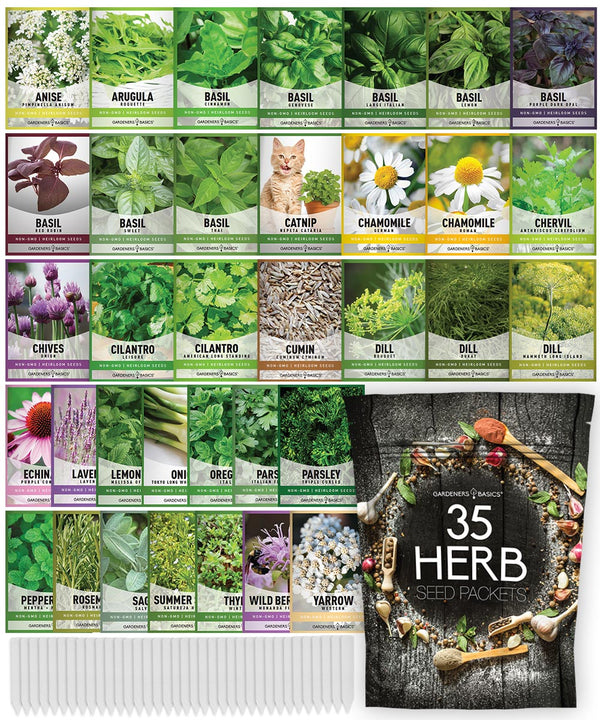
$29.95
$49.95
Heirloom, non-GMO herb seeds for indoor and outdoor home gardens! Introducing our 35 Herb Seeds Variety Pack, the ultimate selection for any herb garden enthusiast! This premium assortment includes heirloom herb seeds that are non-hybrid, open-pollinated, and non-GMO, ensuring you get only… read more
Read seed packets
Always follow the instructions on seed packets for the specific type of seed you're planting. These guidelines will help you choose the right soil mix and provide the optimal growing conditions for your sources. We also are trying to provide concise articles and videos for each type of plant we sell so that you can have more confidence in growing our fruits, vegetable, and herbs.
Understand your plants' needs.
Different plants have varying nutrient, drainage, and aeration requirements. Research your chosen plants' specific needs to determine whether a seed-starting mix or potting soil is more suitable.
Consider the growth stage.
Seed starting mix is ideal for germinating seeds and nurturing delicate seedlings, while potting soil is better suited for established plants that require more nutrients for growth and development.
Don't be afraid to customize
Sometimes, you may need to modify your soil mix to better suit your plants' needs. Feel free to experiment with different ingredients and ratios to create the perfect growing medium for your garden.
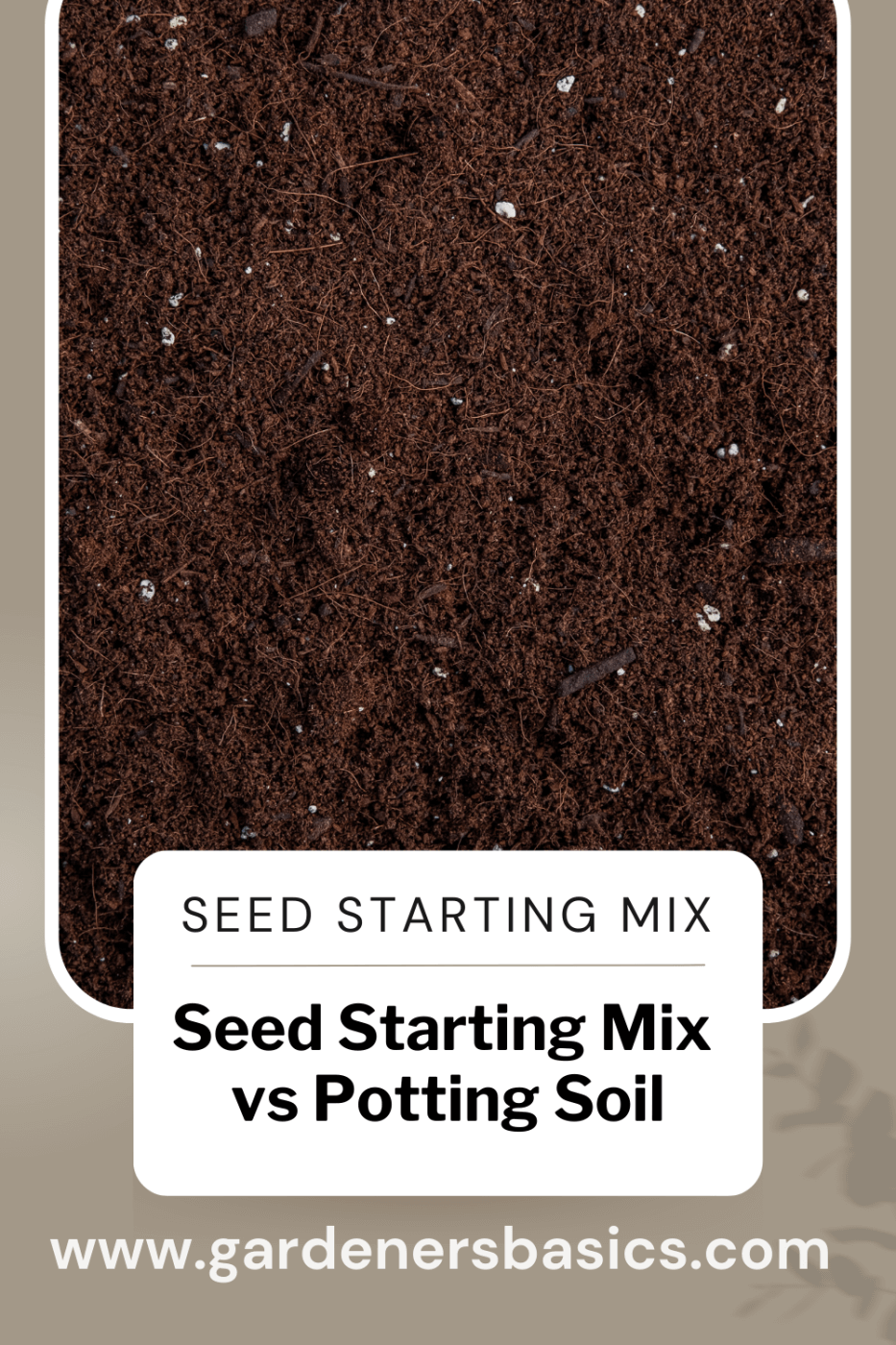 Frequently Asked Questions (FAQs) - Seed Starting Mix vs Potting Soil
Frequently Asked Questions (FAQs) - Seed Starting Mix vs Potting Soil
Q: Can I use potting soil for seed starting?
A: While it is possible to use potting soil for seed starting, it is not ideal. Potting soil is typically heavier and may contain more nutrients than seed starting mix, leading to poor germination rates and root development. The seed starting mix is specifically formulated to provide the right balance of aeration, moisture retention, and sterility required for optimal seed germination.
Q: Can I use a seed starting mix for all types of plants?
A: The seed starting mix is designed for germinating and nurturing young seedlings. It can be used for various plants, including fruits, vegetables, herbs, and flowers. However, as your seedlings grow and develop, it is essential to transplant them into nutrient-rich potting soil to support their continued growth and development.
Q: How long should seedlings stay in the seed starting mix?
A: Seedlings should be transplanted into potting soil once they have developed a robust root system and at least two sets of true leaves. The exact time may vary depending on the type of plant and growing conditions, but generally, seedlings are ready for transplanting 2-4 weeks after germination.
Q: How do I know if my potting soil or seed starting mix has gone bad?
A: Soil mixes can lose effectiveness over time, especially if not stored properly. Signs that your soil mix may have gone bad include an unpleasant odor, mold or fungal growth, or a compacted, heavy texture. To ensure the best results, always store your soil mixes in a cool, dry place and use them within a reasonable timeframe.
Q: Can I reuse seed starting mix or potting soil?
A: While it is possible to reuse seed starting mix or potting soil, doing so can increase the risk of pests, diseases, and nutrient imbalances. If you reuse your soil mixes, remove any dead plant material, sterilize the mix by baking it in the oven, and amend it with fresh nutrients to restore fertility.
Conclusion - Seed Starting Mix or Potting Soil?
Seed starting mix and potting soil serve different purposes in your gardening journey. While seed starting mix is specifically designed for germination and early growth, potting soil provides the necessary nutrients for established plants to thrive. Understanding the differences between these two mediums, their unique benefits, and how to use them appropriately is crucial to growing a healthy, flourishing garden. So, the next time you're preparing to sow seeds or transplant seedlings, choose the right soil for the job and watch your garden come to life.



